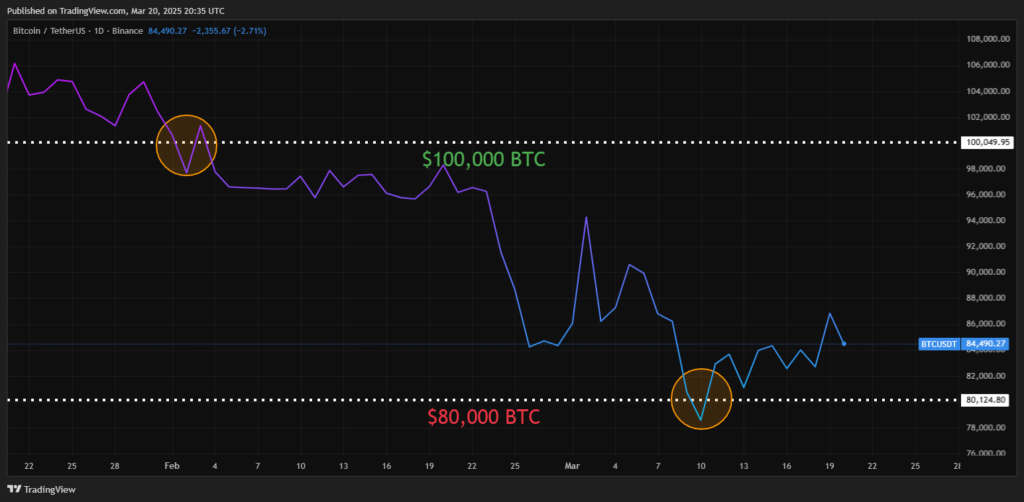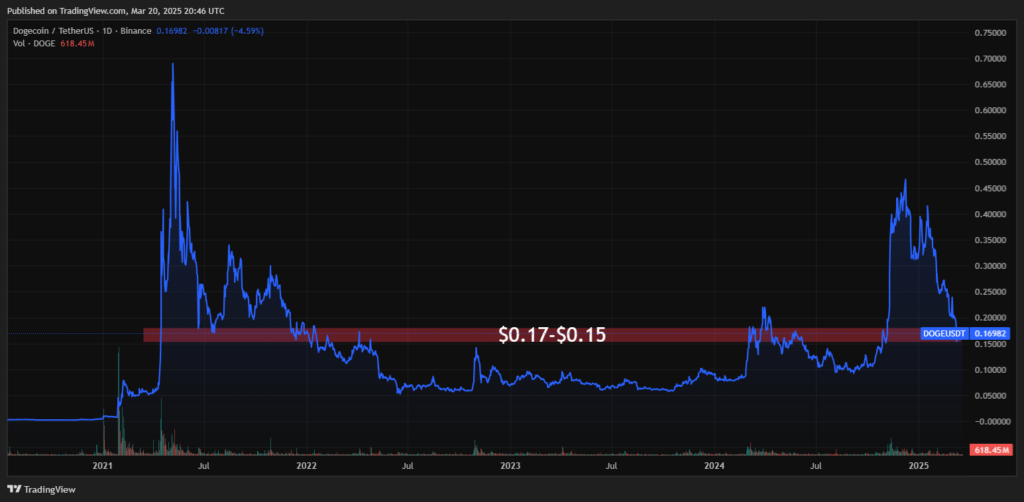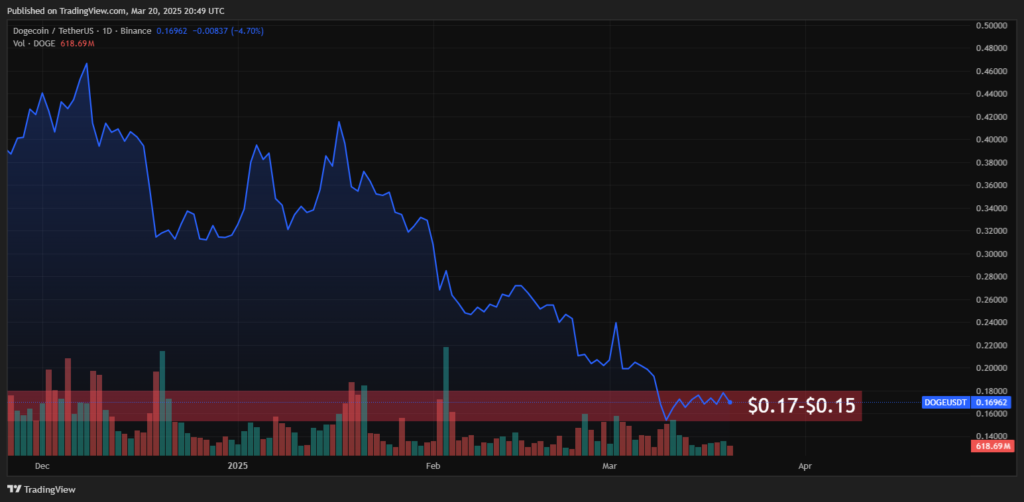Much like trying to wrestle a bear, trading in a bear market is often considered one of the most difficult types of investment. After all, despite being furry, round, and even kind of cute — bears are ferocious animals that shouldn’t be messed with. Just ask DiCaprio, he’ll let you know all about that.
That is not to say that there is no way to profit in a bear market, but things get more delicate and precision is more important than anything. So if you want to learn a few things about how to trade on a bear market, here are some tips.
Bear Market Trading Strategies
Trading in a bear market requires a far more methodical approach. In this environment, things like entry and exit strategies, trade amount, and risk management become far more important.
Dollar-Cost Averaging
Dollar-cost averaging, or DCA, is the act of steadily acquiring a given amount of crypto at a fixed-dollar cost. In a bear market, this allows investors to constantly acquire assets “cheap”, if they assess that asset will be worth a lot more in the future.
This is especially useful for investors looking to accumulate crypto in the long run, but not as useful for day traders. We have a full DCA breakdown right here if you’re interested in this strategy.
Identifying Support Levels
Support levels are like safety nets for asset prices—they’re points where prices historically stop falling and bounce back due to increased buying activity. Identifying these levels requires a mix of technical analysis and market observation. For instance, if Bitcoin has frequently stabilized around $25,000 during past dips, that price becomes a key support level. Traders use tools like trendlines and moving averages to find these zones. The strategy? Buy near support, expecting a rebound.
Portfolio Diversification and Risk Management
This is always important, but especially important if you’re planning to go against the market. Trading is difficult enough as is, adding to that the notion that you have to go against the extreme selling pressure seen on a bear market adds a new layer of difficulty.
For that reason, diversifying your portfolio and making sure you apply the best risk management possible is of the utmost importance. We have a complete guide on risk management for intermediate traders right here, so make sure you check it out.
Trade The News
Technical analysis only gets you so far, in order to truly understand how the market works, you need to keep track of current events.
For instance, it would make no sense to put a call option on Dogecoin if you just read an article on a news website, talking about this totally imaginary and fake tweet by not really Elon Musk, handmade just for this example:

However, if you were to read that article and decide to short DOGE, you’d likely make some profits.
Crypto Bear Market Tips
First of all, don’t get emotional. Emotions are great when you are talking to your significant other, or watching that damned movie where the dog dies in the end — R.I.P. Marley — but they are definitely not a great tool for trading. Try to maintain a long-term perspective, it will be all right.
Second, you don’t necessarily have to keep all your holdings in digital assets all the time. Stablecoins are a great tool to protect your investments during a bear market, without leaving the blockchain.
Staking and yield opportunities, like Kasta’s lock-up program, allow you to earn from your digital holdings without the pressure of trading on a bear market.
Finally, making sure you’re using a reliable exchange to ensure the security of your funds is also essential. On that note, here’s a great offer if you’re planning to deposit on WEEX. They’re giving away a 50% deposit bonus, with a maximum of 1,000 USDT. Perfect if you’re looking to add more funds to your trading account!
Short Selling Crypto
Short selling basically means that instead of buying a digital asset in hopes that it will gain value, you will instead be betting against the market.
When you’re shorting, exchanges are borrowing you the amount of crypto in your short position, and then you sell it at the current price with the goal of buying it back later at a lower price, profiting from the difference.
Shorting crypto can be extremely profitable during a bear market, especially if you catch the downward movement at the very start. However, like any form of trading, you’ll need to keep your call options in check, implement good risk management, and use technical analysis to the best of your abilities to know when to enter and leave the position.
Best Bear Market Investments
During bear markets, selecting the right investments is crucial to weather the downturn and position yourself for future growth. Assets like Bitcoin and stablecoins are widely considered safer choices due to their resilience and utility.
Bitcoin, as the leading cryptocurrency, often stabilizes faster during market turbulence and is seen as a “digital gold” due to its ability to act as a store of value during times of economic uncertainty. Meanwhile, stablecoins, pegged to fiat currencies, provide stability and liquidity, acting as a protective shield against market volatility.
That is considered the more conservative approach to investing in a bear market. If you’re looking to profit, the investments will depend on the current market conditions.
Altcoins and memecoins tend to react with more volatility, meaning that shorting them at the brisk of a downward reversal could be profitable. Of course, everything will depend on your ability to analyze the market.
Risk Management In A Bear Market
If you’re down to wrestle a bear, you may as well be well-equipped for the task, right?
Risk management in a bear market is very important. These types of market periods can be tricky because while the overall value of the cryptocurrency market is going down, momentum is always building for a potential reversal.
This can make bearish periods more volatile, with stronger fakeouts and unpredictable price swings that can quickly catch traders off guard, leading to significant losses without proper precautions in place.
Because of this, stop-loss and take-profit orders are even more important. In a bear market, it is typically not a good idea to leave your position afloat, especially if it is leveraged. On that note, also make sure to take it easy on the leveraging bud. There may be a time and a place to enter a position with a load of leverage, but a bear market is likely not it.
Finally, make sure you’re always liquid. Keeping a portion of your holdings in stablecoins may ensure that you are always ready to seize opportunities when a given asset hits attractive levels.
Technical Analysis For A Bear Market
Using technical analysis to identify key support zones is also another strategy to acquire “undervalued” digital assets, or even to decide when to leave a short position.
In this strategy, let’s say you see Bitcoin losing the $100,000 margin, but you know sellers will face a lot of resistance at the $80,000 level.

Buying BTC at that support zone will allow you to acquire BTC cheaper if the asset reverts back to $100,000.
The above example uses a very green analysis of Bitcoin, given the asset surpassed $80,000 for the first time only a couple of months before this article was written. So let’s look at an example with a stronger perspective.
As of March 2025, Dogecoin has lost a tremendous amount of value, down by over 60% since December. When investors saw the memecoin crashing down, what would be the best possible zone to try to predict a possible stagnation?
If we look at Dogecoin’s history, we’ll see that the $0.17– $0.15 zone is historically one of the most significant support/resistance zones. For several times since 2021, that zone has been pivotal for price action analysis on this digital currency.

And this time in 2025, Dogecoin buyers have once again forced sellers to respect that zone, showing an indication that, despite the beatdown, buyers still have some strength in the market.

Key Indicators For Analyzing a Bear Market
- Moving Averages (MA): Smooth out price trends by calculating the average price over a specific period. Helps identify overall market direction.
- Relative Strength Index (RSI): Measures the speed and change of price movements to determine whether an asset is overbought or oversold.
- Fibonacci Retracement: Highlights potential reversal levels by identifying key ratios based on recent price movements. Useful for spotting support and resistance zones.
- Volume: Tracks trading activity to confirm trends. High volume during price moves strengthens the trend’s reliability.
- MACD (Moving Average Convergence Divergence): Shows momentum and trend strength by comparing two moving averages. Useful for spotting crossovers and potential reversals.
- Bollinger Bands: Displays price volatility by plotting bands around a moving average. Prices touching outer bands can signal overbought or oversold conditions.
- Support and Resistance Levels: Identifies key price zones where buyers or sellers dominate, helping pinpoint potential entry and exit points.
- Candlestick Patterns: Reveals price trends and reversals using visual patterns like Doji, Hammer, or Engulfing candles.
If you’re interested in learning about technical indicators and trading strategies with some of the best traders out there, make sure to check out our exclusive Legends Community.
Bear Vs Bull Market Trading
While a bear market can be profitable, a lot of seasoned traders like to shift their strategies in a bear market.
In a bull market, the goal is always to maximize profits, ride upward trends, and increase the size of your portfolio. Meanwhile, in a bear market, traders benefit from putting risk management first, aiming to defend their holdings instead of just jumping on market trends.
Long-Term Crypto Investing In A Downturn
There are two scenarios for a long position during a bear market. One is extremely exciting, while the other is… not fun at all.
The first one is when investors decide to go long during a bear market by assessing that bears are finally losing strength. In this scenario, a well-put position could lead to significant profits as the asset returns to its trading value before the bears’ attack.
However, the second scenario is when a trader is long-term holding an asset, and then the market goes bearish. In this instance, seeing your position go from bad to worse can bring the worst out of every trader.
With that said, relax. There are a couple of strategies that can help us avoid wallet-crushing price movements. For instance, investors can hedge their losses by shorting the very same asset they’re holding.
Or else, they may implement the Dollar-Cost Average strategy we discussed earlier to acquire even more tokens. After all, their long position means they believe in this asset for the long run, and in that sense, this bearish movement could prove just a new opportunity to buy more of this asset at a discount.
Listen, we know it’s hard to stay level-headed during times like this. And we’ll mention the “mental” aspect of trading in a bear market on our very next topic.
Market Psychology In A Bear Market
The real “tilt-tester” of every trader is trading in a bear market. When you’re more susceptible to losses, and the expected price movements never come, it may drive a man or a woman to do stupid things, and we don’t want you doing anything stupid.
You shouldn’t be getting this upset about a trading loss unless you’re betting on money that you shouldn’t. For this reason, never invest more money than you should, and always make sure to keep savings outside of your trading, because you never know when you might need it.
How To Profit In A Bear Market
Profiting in a bear market requires a combination of strategy, discipline, and a clear long-term vision. Throughout this guide, we’ve discussed the critical tools and approaches necessary to navigate bearish conditions effectively.
Key strategies like technical analysis—such as identifying support levels—allow traders to spot opportunities to buy undervalued assets or determine optimal exit points for short positions. Using indicators like moving averages, RSI, and Fibonacci retracements can further enhance decision-making.
For investors seeking stability, risk management is paramount. Strategies such as setting stop-loss orders, maintaining liquidity through stablecoins, and avoiding over-leveraging ensure capital preservation while preparing for volatility.
We also explored the importance of long-term investments, like accumulating assets with strong fundamentals during downturns, as they can rebound and provide significant returns in the next bull cycle. Additionally, practicing emotional resilience and maintaining a clear head ensures traders avoid impulsive decisions that could lead to losses.
Wrapping it Up
So while we learned absolutely nothing about how to actually wrestle a bear, we at least learned some valuable insights about trading cryptocurrencies during a bear market. Sure, these periods may be tough, but with patience and calculated moves, they also offer unique opportunities for investors.
Disclaimer: The information provided in this article is for informational and educational purposes only and does not constitute financial, investment, or trading advice. Any actions you take based on the information provided are solely at your own risk. We are not responsible for any financial losses, damages, or consequences resulting from your use of this content. Always conduct your own research and consult a qualified financial advisor before making any investment decisions. Read more






